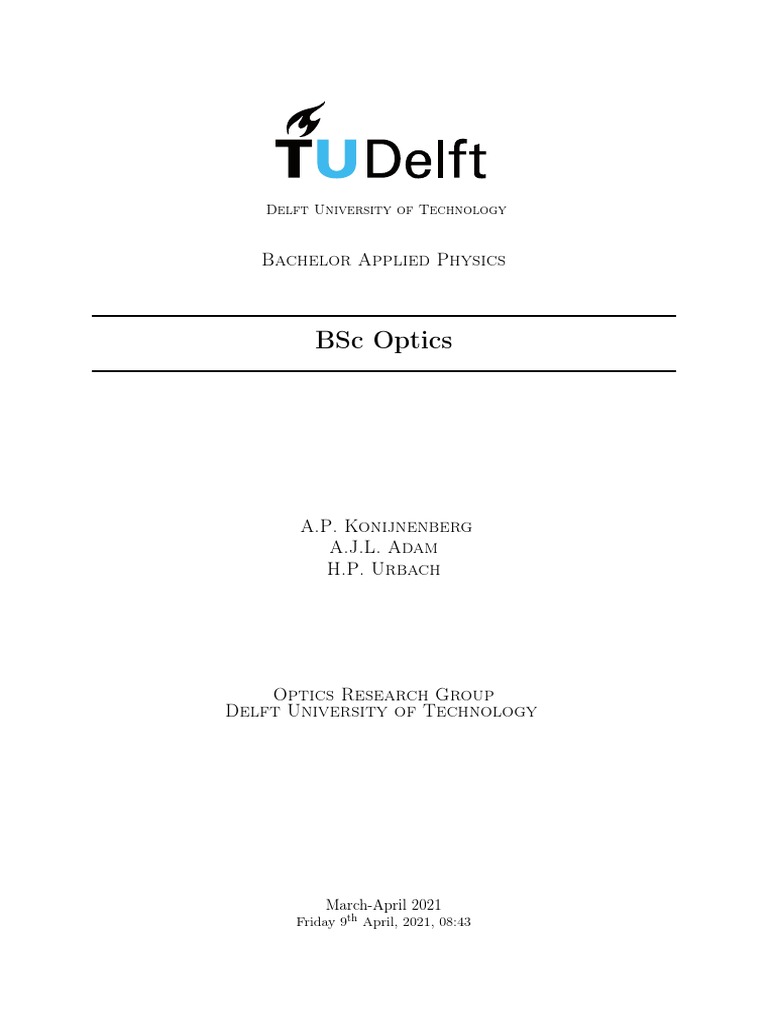Optics, the science of light and its interactions with matter, has captivated the minds of thinkers and scholars for centuries. As a branch of physics that overlaps with various disciplines, including engineering and astronomy, it raises an intriguing question for prospective learners: where should one embark on this intellectual journey? For those enticed by the complexities of light behavior and its applications, books serve as essential gateways to understanding the vast landscape of optics. Herein lies a curated selection of remarkable texts that lay the groundwork for a solid comprehension of optical phenomena.
First and foremost, consider the seminal work, “Optics” by Eugene Hecht. This comprehensive tome provides a thorough introduction to the principles of optics while balancing mathematical rigor and conceptual clarity. Hecht elucidates fundamental topics ranging from geometric optics to wave optics, making this book an essential pilgrimage for beginners. The inclusion of illustrative diagrams and real-world applications enriches the learning experience, challenging the reader to visualize light’s multifaceted behavior. This book instills a strong foundation, firing the imagination and preparing the learner for more advanced studies.
As the learner progresses, they might be inclined to explore “Introduction to Modern Optics” by Frederick W. T. H. K. D. E. L. H. G. E. M. Gordon. This text appeals to those with a penchant for theoretical rigor complemented by experimental insight. Gordon carefully transitions from historical perspectives to contemporary developments, presenting optical systems in their full complexity. The author accentuates the pivotal role of optics in technological innovation while presenting a series of challenging exercises to reinforce critical thinking and problem-solving skills. How might the concepts introduced in this book manifest in everyday technological devices? This inquiry not only deepens understanding but also engages the learner actively.
The next recommendation is decidedly more specialized but no less vital. “Fourier Optics: A Tutorial” by David G. Stork represents a vital fusion of mathematics and physical phenomena. For those who possess a basic understanding of optics and seek to delve deeper, Stork’s book serves as a bridge to sophisticated concepts such as diffraction, imaging systems, and signal processing. Through meticulous derivations and relevant examples, the author guarantees that even complex ideas can be grasped by those willing to engage with the mathematical components. Readers should ponder: how can the Fourier transform of an optical signal revolutionize our understanding of imaging and communication? This critical question prompts them to consider applications in modern technology, such as digital image processing and optical data transmission.
A perennial favorite within academic circles is “Principles of Optics” by Max Born and Emil Wolf. This magnum opus transcends mere instructional material; it is a monumental reference in the field of optics. For those who find joy in challenge, traversing its pages offers the thrill of grappling with advanced topics such as coherence, polarization, and quantum optics. The exhaustive detail and mathematical sophistication demand perseverance, but they reward the diligent with profound insights into the underlying principles governing optical phenomena. Armed with this knowledge, learners stand well-prepared to tackle even the most perplexing optical challenges that might manifest in their future studies or professional endeavors.
Perhaps the most engaging aspect of optics is its interplay with observation and perception. “The Optics of Life” by Alberto V. Oppenheim explores the realm of biological optics—how living organisms utilize and manipulate light. This delightful integration of biology and optics not only captivates but challenges readers to consider the evolutionary adaptations that stem from optical capabilities. It beckons them to ask: how might the principles of optics be leveraged to unravel the mysteries of life on Earth? The text seamlessly teams theoretical exploration with practical implications, stretching the learner’s imagination to embrace the full scope of optical science.
For aspiring inventors and engineers, “Optical Engineering” by Joseph Goodman presents a thorough examination of the profession’s principles. The relevance of optics to modern engineering applications cannot be overstated. Goodman’s text interlaces design considerations with practical applications across various fields. Learners who engage with this book will hone their skills in designing optical systems, but they must also confront the inherent complexities of optical design challenges. Goodman’s practical exercises will inspire them to innovate and think critically about real-world applications, pushing them to explore how they might apply theoretical concepts in practical settings.
Lastly, no exploration of optics is complete without the whimsical yet enlightening “The Light Fantastic” by Terry Pratchett. While not a traditional textbook, this narrative approach to light and optics presents complex ideas through humor and fantasy. By weaving optical principles into storytelling, Pratchett invites readers to engage with these concepts at a visceral level, prompting them to consider how light shapes not only the physical world but also the fabric of our imagination.
In conclusion, embarking on a journey through the realm of optics is undoubtedly a multifaceted endeavor filled with challenges and opportunities for insight. Each of the aforementioned texts offers a unique doorway into this captivating field, from foundational knowledge to specialized inquiries. As you gather these volumes, consider what passions drive your quest for knowledge. Are you drawn to the foundational theories that underpin our understanding of light, or do you crave the practical applications that leap from page to real-world innovation? The study of optics is not merely an academic pursuit; it can profoundly alter one’s perception of the world. So, prepare your mind, gather your resources, and dive into the enchanting world of light with fervor and curiosity.












